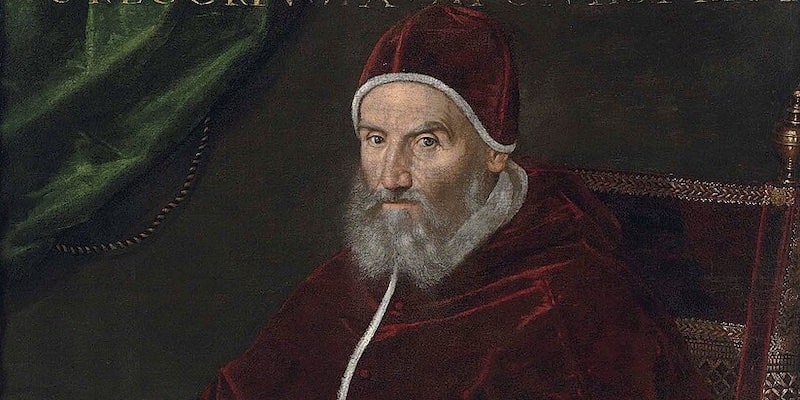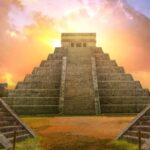We explain what the Gregorian calendar is and its differences from the Julian calendar. Also, its characteristics and its history.

What is the Gregorian calendar?
The Gregorian calendar It is the time division system used today officially in almost the entire world. It is a solar calendar that organizes time in years, months and days.
It was created in the 16th century by a commission of astronomers at the request of Pope Gregory XIII. It was first implemented in 1582 in the Spanish Empire and in Portugal, and then it was gradually adopted in different parts of the world.
The previous calendar (called “Julian”, having been introduced by Julius Caesar, in the year 46 BC in ancient Rome) had produced a delay of days. He had an inaccurate calculation of the duration of the tropical year (that is, the time it takes for the Sun to pass the same point with respect to the Earth twice).
In the 16th century, The Catholic Church established the need to eliminate the gap produced by the Julian calendar because it affected the celebration of Easter and other religious celebrations. With this objective, Pope Gregory XIII ordered the creation of a commission that included the study of different astronomers and specialists (among them, Cristóbal Clavio, Luis Lilio and Pedro Chacón).
The so-called “calendar commission” created a new system which corrected the calculation error that the Julian calendar had. To adjust for the lag produced by that system, ten days were eliminated from the calendar for the first time. For this reason, in 1582, October 5 was followed by October 15.
See also: Modern Age
Differences between the Julian calendar and the Gregorian calendar
Like the Julian calendar, the Gregorian calendar maintained the division of the year into 365 days and the incorporation of one more in leap years.
The difference between the two calendars is that in the Julian system, the leap year was celebrated every four years and in the Gregorian calendar, Leap year is celebrated every four years with the exception of years that are multiples of 100. The new system removes three days from the calendar every four hundred years.
Features of the Gregorian calendar
The Gregorian calendar established the length of the tropical year at 365.2422 days. In turn, to organize the calendar, three types of year were distinguished:
- common year. It is the year that lasts 365 days.
- leap year. It is the year that lasts 366 days.
- secular year. It is the year that ends in 00 and lasts 365 days (except for the one whose number is a multiple of 400, which is considered a leap year).
Although this mathematical organization is more exact than that of the Julian calendar, It has a phase shift of half a minute every 3,300 years. On the other hand, the speed of the Earth's rotation tends to slow down, which affects the calculations for establishing the calendar over long periods of time.
History of the Gregorian calendar
Until the 16th century, the Julian calendar was used in Europe established by Julius Caesar in ancient Rome in 46 BC. C. This calendar had been created by the Alexandrian astronomer Sosigenes and set the length of the year at 365 days and one more day every four years (the leap year).
Sosigenes had calculated that the Sun took 365.25 days to pass through the same point again with respect to Earth. Today this is called the “tropical year” and the exact number is 365.2422. The calculation difference is only 11 minutes and 12 seconds, which means one day every 128 years.
This error caused that throughout the centuries the calendar will be displaced with respect to the seasons. For example, in the year 325, the spring equinox had occurred on March 25; and by the year 1582 it had already advanced to March 11.
This constituted a problem for the Catholic Church, since it organized part of its liturgical calendar (religious festivities) in relation to a lunisolar system, in which the identification of the equinoxes was key.
In the 16th century, between 1545 and 1563, the Catholic Church held the Council of Trent. In those meetings, The bishops established the need to correct the lag produced in the calendar since the Council of Nicaea held in 325 AD. C., which affected the organization of religious festivities such as Easter (which were established according to the lunar calendar).
A few decades later, Pope Gregory XIII dedicated himself to the creation of the new calendar and convened a commission of specialists.
Adherence to the Gregorian calendar
In 1582, Pope Gregory XIII proposed the reform to all European sovereigns. The kings of the countries allied to Catholicism incorporated the new calendar immediately or in the following years: Spain, Italy, Portugal, France and Denmark did so in 1582, the Catholic States of the Netherlands and Prussia in 1583, Poland in 1586 and Hungary in 1587.
However, the Protestant Christian kingdoms (that is, those that adhered to the Lutheran reform and had broken with the Catholic Church) refused to take the new calendar because they saw it as a papal imposition. For example, Germany only incorporated the Gregorian calendar in 1700 and England in 1752.
References
- Gutiérrez, S. (2008). Our calendar: a highly precise measure. Addition (pp. 87-92).
- Llagostera Cuenca, E. (2007). The measurement of time in Antiquity: the Egyptian calendar and its “heirs”, the Julian and the Gregorian. UNED. Space, Time and Form Series II, Ancient History.
- Vicente, JJ (2010). Brief history of the calendar. Astronomy (pp. 69-86). University of Granada.





